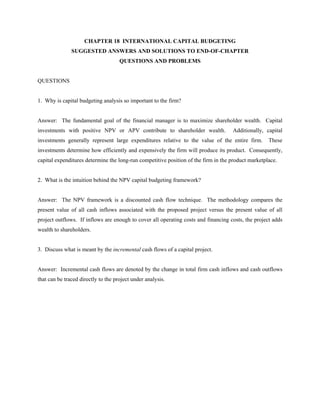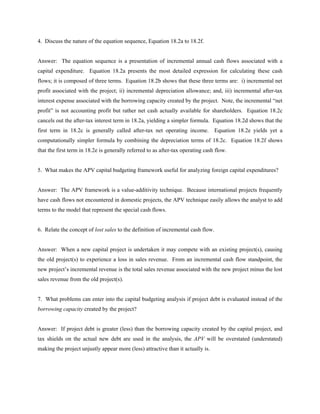Dorchester Ltd is considering building a new manufacturing plant in the US to expand its candy production and sales in North America. The initial cost of the plant would be $7 million. Local debt financing of $1.5 million at 7.75% interest would be provided. Dorchester must decide whether to issue additional debt in pounds sterling at 10.75% or US dollars at 9.5%.
Building the new plant would allow Dorchester to serve the entire North American market and realize higher profits of $4.40 per pound sold. However, the analysis of costs, revenues, tax rates, debt financing, and exchange rates is complex given the international dimensions. A full capital budgeting analysis is required to
















